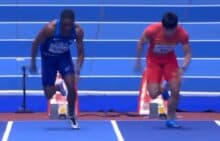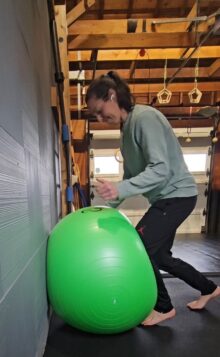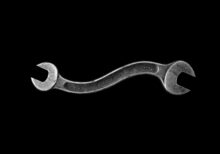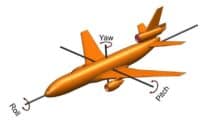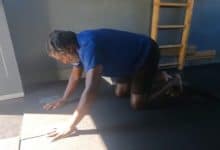The only mental to physical bridge I will use in this post is that when your movement and your life are aligned, when they reflect the same themes and sentiments, you cannot help but see application and connection to everywhere… Read more ›
Alternative Title: Describing the Avoidant Half I have been writing about asymmetries for some time. Whether it be determining the up leg from from down leg, or the pitfalls of detorsioning the system, I continue to find and… Read more ›
Asymmetry. Up Leg. Compression. Push Down. Space. Rotational Organization. These all describe the physics of one half of the body accepting load, and one half of the body avoiding load. The first time I wrote about this, I referred to… Read more ›
Part 1 of this series explained how knee should not be used as a load-bearing joint. Part 2 showed how pressuring the knee can help build safety, alignment, and desired force at the desired time. This third and final segment… Read more ›
In part 1, I suggested that using the knee as gas instead of brakes could help free up the knee for motion and elicit the hips and ankle-foot as stabilizers. For folks with chronic pain, however, their nervous system likely… Read more ›
Torsion. We all have it: a particular line of twist running through our carriage, gripping us in a certain way and keeping us upright. Each fold and joint tells its story, whether you realize it or not. It’s how we… Read more ›
My previous post got into the shame and embarrassment that prevents many of us from addressing issues with parts connected to sex or excrement. This one is more objective, looking at anatomy and physics. When you seek to understand the… Read more ›
This feature photo shows an unstaged photo of the top drawer of my filing cabinet in my locker room office. Note the bounty of certain items (that aren’t snacks). Shorts, pads, some extra underwear — all tell tale signs… Read more ›
When new words are introduced, we tend to react as if they make things more complicated. We already know. We already have an understanding on what the terms we already use mean. Why would we change? We change when we are… Read more ›
Flexion and extension. Compression and Suspension. There are pairs that govern movement, both globally and locally. The system and its parts act to pull apart and come together. Posture, moving fast, and any sort of training or exercise is versed… Read more ›
This piece serves as the follow up to How To Push Down. When we are talking about compression, we are also talking about tension. It is the interaction of these two push-pulls that creates suspension. Otherwise everything would collapse. … Read more ›
This post serves as a follow up to: A Path Towards Harm. Otherwise titled: The things I did wrong when I didn’t pay attention or have compassionate patience. The tag to this blog used to read, “fix yourself.” But… Read more ›
Some context. I have been learning to be sensitive to signals of and mitigate pain for about a decade now. My training revolves around feeling things out, noticing any off-ness, spending some time and attention there, and finishing the session… Read more ›







